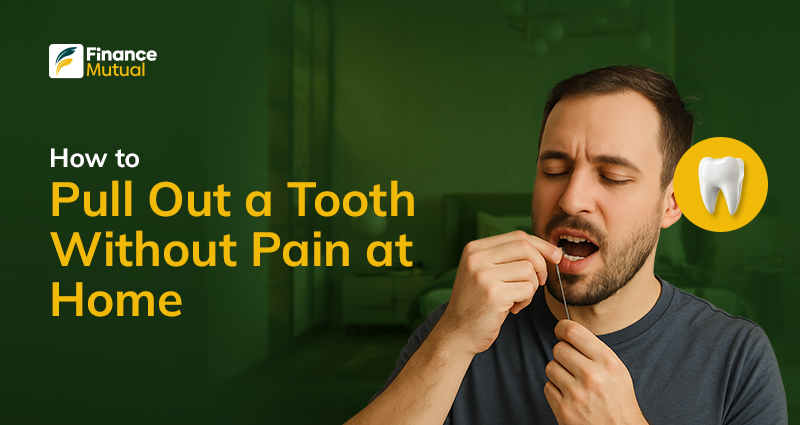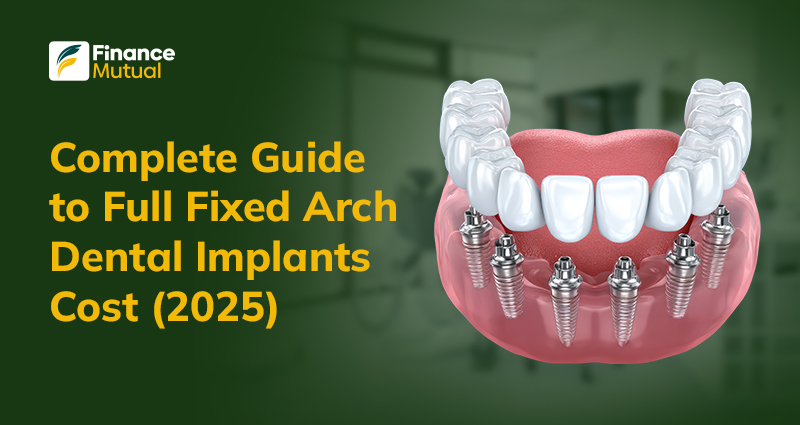
Quick Answer
How to Pull a Tooth at Home
Gently wiggle it with clean hands a few times a day. When it feels ready, use a clean cloth or gauze to grip it and apply slow, steady pressure without twisting and yanking. If it doesn’t come out easily, wait and try again later. See a dentist if there’s pain, swelling, or it feels stuck.
There comes a point when holding on does more harm than letting go. If you're looking up how to pull out a tooth without pain at home, chances are you're dealing with one that feels loose or hurts a little too much. Pain that doesn’t go away is not something you should ignore.
Sometimes it's an infection. Sometimes, it’s pressure from a crowded bite or a broken tooth. And in most cases, removing the tooth is the best way to avoid bigger problems.
Whether it’s your own tooth or your child’s, there’s a safe way to do it. This guide goes beyond quick fixes. It will give you clarity on when removal is necessary, what signs to watch for, and how to handle it all safely.
Not Every Tooth Can—and Should—Be Saved
Tooth pain that won’t quit? That’s your body warning you. If the ache lingers even after taking painkillers, don’t ignore it. This could mean the tooth needs to come out.
➮ Infections Are Loud and Clear.
Swelling, a foul taste, or pus in your mouth? These are signs of an infected tooth that’s putting your health at risk. Don’t wait. Removal might be the only way to stop it from spreading.
➮ Loose Teeth? That’s Trouble.
If your tooth wiggles while brushing or eating, gum disease might be the culprit. Weak gums can’t hold on forever. In many cases, extraction is the safest move.
➮ Teeth Fighting for Space?
Crowded teeth don’t just make your smile uneven. They can mess with your bite and cause pain. If there’s no room to breathe, a few may need to go, especially before getting braces.
➮ Badly Broken Teeth Can’t Always be Fixed.
If a fracture runs deep beneath the gum line, saving that tooth becomes nearly impossible. Sometimes, the smartest option is to remove it and prevent further damage.
➮ Wisdom Teeth Stirring Chaos?
They arrive late, get stuck, and push their neighbors around. If they’re hurting or misaligned, don’t wait. Extraction might be your best call. And this is the case for most folks.
➮ Deep-rooted Cavities Spell Danger.
When decay reaches the root, fillings and root canals might not cut it. Pulling the tooth can protect the rest of your mouth from even bigger problems.

Just Had Your Wisdom Teeth Removed? Here's Your Complete Guide to Healing Faster
How to Pull Out a Tooth Without Pain at Home?
If your tooth is already loose, you don’t need to force it out. Just start by gently moving it with clean fingers a few times a day. No need to rush it. Pulling too early might hurt more than help.
- Once it starts feeling wobbly, grab a clean cloth or gauze for grip. This gives you better control and keeps the tooth from slipping.
- Now, apply slow and steady pressure in the direction it wants to move. Don’t twist it. Don’t yank it. Let the tooth do most of the work. If it still feels stuck, leave it for now and try again later.
- After it comes out, you might see a little blood. And that’s okay. Just press clean gauze on the spot and wait a few minutes. The bleeding should stop on its own.
- Once that’s done, rinse your mouth with warm salt water. It keeps the area clean and helps speed up healing. If there’s swelling, place an ice pack on your cheek for relief.
- Always wash your hands before and after touching your tooth. It’s a small step, but helps avoid infection or irritation.
- And if something feels off or the tooth won’t budge, stop. It’s better to wait or ask a dentist to take a look.
How to Get a Tooth Out Fast and Painless for a Child?
Some kids don’t feel ready to pull a loose tooth. And that’s fine. But with the right approach, you can make it easier and less scary.
- Start by asking them to gently wiggle the tooth every day. This builds comfort and helps the tooth come out on its own.
- You can also give them a crunchy apple or carrot to bite. Sometimes, a single bite is enough to loosen or remove the tooth.
- If the tooth is very wobbly, you can try dental floss. Wrap it around the tooth and let your child pull slowly with your help.
- Another option is using clean gauze to hold and pull the tooth. It gives a better grip and feels safer than fingers or floss sometimes.
- Let your child use a mirror and check the tooth by themselves. This gives them control and can boost their confidence to pull it out.
- To make it fun, create a countdown until the Tooth Fairy visit. It builds excitement and shifts the focus from fear to reward.
And most importantly, stay calm and don’t force anything at all. If they’re not ready, it’s better to wait than cause any stress.
Tooth Extraction Pain Relief Home Remedies
Pulling out a loose tooth can be painful. Just follow a few simple steps to stay safe.
- Once the tooth comes out, rinse your mouth with warm salt water. This keeps the gum area clean and helps prevent swelling or infection.
- Avoid chewing from that side for a day or two. Let the spot heal. Also, be gentle while brushing near the gap to keep it clean.
- If you feel pain later, you can take a mild pain reliever or ask a doctor if you’re unsure.
How Much to Pull a Tooth
Tooth removal seems simple. But the cost isn’t always the same. It depends on the type of extraction and what else you may need.
✦ Simple Extraction
This is the most basic type. The dentist pulls the tooth without cutting the gum. It works when your tooth is healthy, visible, and easy to remove. That’s why it costs less. You’ll pay around $75 to $250 per tooth.
✦ Surgical Extraction
This one is more complex. The dentist may need to cut the gum or break the tooth. It’s usually done when the tooth is broken, stuck, or not coming out easily. Since it takes more effort, it also costs more. Expect to pay between $180 to $550 per tooth.
✦ Wisdom Tooth Surgery
Wisdom teeth are a different story. They’re often impacted or grow in the wrong direction. Removing them takes time. And sometimes anesthesia. That’s why the price is higher, especially if you remove more than one. You might pay anywhere from $120 to $800 per tooth.
✦ Other Costs That Add Up
Tooth removal or extraction isn’t just about pulling the tooth. There are other steps before and after that can cost you more.
♦ Consultation: First, you meet the dentist to check the issue. This is a standard visit before the procedure.
♦ X-rays: A panoramic X-ray gives a full view of your teeth and jaw. It helps the dentist understand what’s going on.
♦ Anesthesia: Not everyone gets the same type. It depends on your case and comfort level. You may get local numbing, laughing gas, or IV sedation.
♦ Medication: After the extraction, you may need meds. This could be antibiotics or something for pain relief.
♦ Follow-up Visit: Some people need one, some don’t. If you had stitches or complications, you’ll likely go back. The cost depends on what’s needed during that visit.
Manage Dental Treatment Costs with FinanceMutual™
Pulling a tooth out is often an easy task. But it can go south if your tooth is rotten, broken on the gum line, and more. In such cases, only a dentist can help you.
Of course, dental services come at a cost. If you have insurance, then it might cover some costs of the treatment. But you might have to pay for some from your pocket. And if you’re not insured, then these costs can put you in financial distress.
That’s why seeking dental professionals who provide flexible payment plans using FinanceMutualTM can make a difference. It can help you split your treatment costs. And you can opt for the best dental services.
Make sure you inquire about these payment options during consultation. Many dental professionals provide various payment options. But you might not get payment flexibility everywhere.

The End Note
Losing a tooth isn’t always easy, but sometimes it’s the right thing to do. Whether it’s pain, pressure, or just no space left, removal can bring relief. And if the cost feels heavy, FinanceMutualTM can help you manage it better. With flexible payment options, you don’t have to delay the care you need. Make smart choices for your smile and keep the stress out of the picture.
FAQs
1. My Crown Is Loose. Should I Pull It Out?
You shouldn't pull it yourself, even if it feels like it’s coming off. Visit your dentist to reattach or replace it the right way.
2. Can I Pull My Own Tooth?
If it’s already loose, you can gently try without forcing it. But if it’s painful or stuck, don’t touch it anymore. A dentist will remove it safely without harming nearby teeth.
3. Can You Pull Your Own Wisdom Tooth?
Wisdom teeth sit deep and usually need surgical tools for safe removal. Trying it at home can cause pain, bleeding, or serious damage.
4. How Painful Is Tooth Extraction Without Anesthesia?
Tooth removal without anesthesia can be very painful and traumatic. Even a loose tooth might hurt if pulled too early.
5. How to Remove Tooth Broken at Gum Line at Home?
You can’t remove a tooth broken at the gum line yourself. It needs cutting tools and expert handling to avoid more damage.
6. Can a Dentist Pull a Tooth That Is Broken off at the Gum Line?
Yes, dentists can remove broken teeth with surgical extraction methods.
7. How to Make a Tooth Loose Enough to Pull?
Wiggle it gently with clean hands several times a day. Crunchy foods like carrots or apples can help loosen it naturally.
8. What Are Some Fun Ways to Pull out a Tooth?
Try crunchy snacks, playful wiggling games, or floss tricks with help. Let your child use a mirror for extra courage and control.
9. Can You Pull Your Own Tooth Without a Dentist?
Only if it’s loose and comes out without much pain. Never pull a firm or broken tooth. It can tear your gums.
10. How to Pull a Rotten Tooth at Home?
You shouldn’t pull a rotten tooth on your own at all. It’s fragile, infected, and might break off mid-way, causing bleeding.
11. How to Pull Out a Tooth That Isn't Loose?
Don’t even try. It can be painful and cause serious injury. Forcing it can tear gums or damage nearby healthy teeth.




